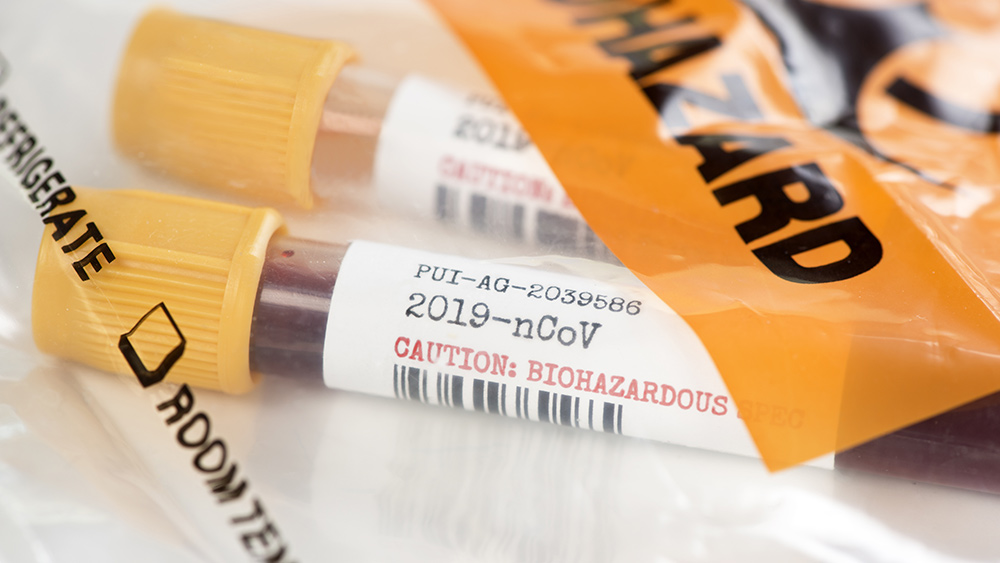Astronomers trace otherworldly cosmic blasts to a galaxy 7.9 billion light-years away
03/08/2020 / By Franz Walker

Astronomers have long been puzzled by the occasional arrival of intense radio bursts coming from space. Now, a team from the California Institute of Technology (Caltech) at Pasadena have traced the origin of one of these bursts to a big galaxy 7.9 billion light-years away from Earth.
Called Fast Radio Bursts (FRB), these get their name from the short duration of each signal, usually lasting only milliseconds. The short duration of these FRBs, combined with the fact that they almost never recur, has made it difficult to pinpoint their sources. Indeed, out of 85 total detected FRBs, this recent one is only the third to have its source identified.
More importantly, this most recent FRB, dubbed FRB 190523, is only the second one-off, non-recurring burst to be pinpointed. The first such instance happened only a week before, when an Australian-led team tracked FRB 180924’s source to a galaxy 3.6 billion light-years away from Earth.
“Finding the locations of the one-off FRBs is challenging because it requires a radio telescope that can both discover these extremely short events and locate them with the resolving power of a mile-wide radio dish,” stated Vikram Ravi, lead author of the study and assistant professor of astronomy at Caltech.
Building a big enough radio telescope
To be able to detect, let alone trace, the source of an FRB requires a large radio telescope, or multiple radio telescopes acting as one. To do this, Ravi and his team built a new array of radio telescopes at Caltech’s Owens valley Radio Observatory (OVRO) east of the Sierra Nevada mountains. OVRO-10, as the new array is called, consists of 10 dishes, each with a 4.5-meter diameter.
When put together, the whole OVRO-10 array acts as a single mile-wide dish. This is thanks to a powerful digital system that collects and processes an amount of data equivalent to a DVD every second. In practice, this allows OVRO-10 to cover an area on the sky the size of 140 full moons.
OVRO-10 detected FRB 190523 on May 23, 2019. Ravi and his team then detected the burst to its host galaxy using this data, as well as data from the Keck Observatory in Hawaii. (Related: Astronomers discover and decode strange signals from a 3-body star system.)
Finding the source of FRBs
More than just pinpointing the origin of one FRB, the localization done by Ravi’s team, alongside the prior one by the Australian team, can help solve the mystery of what causes FRBs in the first place. Both demonstrate FRBs coming from big galaxies, which seems to disprove a long-held theory about where they came from.
Prior to the localization, scientists theorized that FRBs came from Magnetars — a supermagnetic kind of neutron stars. This theory came from the fact that the first FRB to be traced, FRB 121102, came from a young galaxy with an active star-forming environment where young magnetars can be formed inside supernovae.
Both FRB 190523 and the Australian team’s FRB 180924 come from older, bigger galaxies that are much more mellow. This means they most likely did not originate in magnetars.
To figure out where exactly these FRBs come from, more data will be needed. This may be coming soon – OVRO-10 itself is a pathfinder for a larger system called the Deep Synoptic Array (DSA). This system will consist of 110 dishes and is expected to come online in 2021. The hope is that the DSA will be able to find FRBs at a much faster rate than current arrays.
“With the full Deep Synoptic Array, we are going to find and localize FRBs every few days,” stated OVRO director Gregg Hallinan who co-authored the study with Ravi. “This is an exciting time for FRB discoveries.”
Sources include:
Tagged Under: astronomy, Caltech, cosmic, discoveries, fast radio bursts, Galaxies, outer space, radio telescopes, Radio-signals, research, Space, space exploration, Stars
RECENT NEWS & ARTICLES
COPYRIGHT © 2017 DISCOVERIES NEWS


















